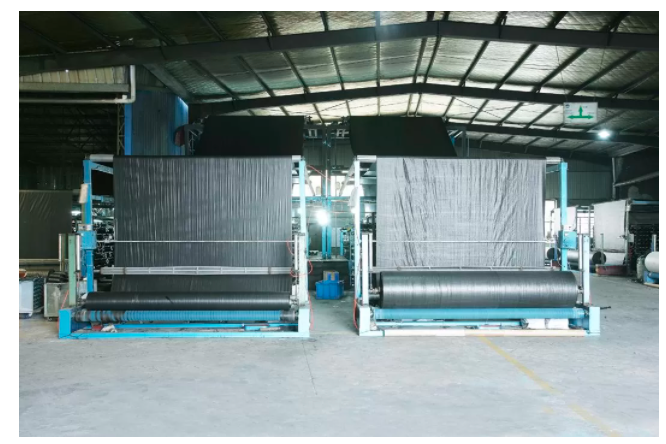- Understanding the Role of Geomembrane Liners in Waste Management
- Innovations in Geomembrane Liners for Water Management
- Geomembrane Liners: A Comprehensive Guide
- The Future of Geomembrane Liners in Civil Engineering
- Geomembrane Liners: Enhancing Landfill Stability
Manager:
WhatsApp:+86 177 0135 2670
Tel:+86 177 0135 2670
Email:marketing@okorder.com
Address:3rd Floor, No.2 Building, No.1 Sanlihe Road
The World of LLDPE Geomembranes: A Flexible Frontier
In the vast landscape of geological engineering, linear low-density polyethylene sheets are a testament to human ingenuity and environmental stewardship. More than just barriers; these linear low-density polyethylene sheets silently protect our lands against contamination. It is in this world that we discover LLDPE geomembranes are not only flexible but also functional and durable.
LLDPE Geomembranes in a Nutshell
Geomembranes made from LLDPE (Linear Low Density Polyethylene) resin have been specially formulated for flexible geomembrane applications. They are ideal in situations where flexibility and elongation properties take precedence as they act as tough barriers against fluid migration and contamination. Their thickness can range from 0.5mm to 2.5 mm giving various options for diverse project needs.

A Myriad of Applications: How Versatile Can LLDPE Geomembranes Get?
Applications for LLDPE geomembranes are so many that there is no one type to fit all solutions:
Controlled Erosion: Building construction uses such materials to control erosion by providing firm physical barrier to save soil and underlying layers.
Habitat Preservation: In environmental engineering, they prevent pollutants from entering the earth or water bodies thus safeguarding habitats.
Mining Operations: Heap leach pads in particular are protected from corrosive leachate solutions by these membranes which help maintain the integrity of mining activities.
The Riddle of Pricing: What’s ‘Harga Geomembrane’?
It simply means costing issues related with LLDPE geomembrance. The price of these geomembranes is influenced by several factors including:
Quality of Material Used – As higher quality resins will make them durable and perform better, they tend to be more expensive.
Method of Manufacture – Advanced production processes using different machines can affect costs.
Thickness & Sizes – Essentially thicker or bigger laminates will cost more because of increased use of materials.
Market Forces - That is ‘harga geomembrane’ as determined by supply and demand interaction.
Regulatory Compliance – Standards like ASTM D 638/6693 and ASTM D 1004 for instance, may be a measure of quality or reliability, which can affect pricing too.
Degradation & Longevity: Another Perspective on Pricing
Pricing structures must also take into consideration the lifespan of LLDPE geomembranes. The degradation behavior of LLDPE geomembranes has been investigated in relation to synthetic mining solutions at temperatures up to 85 °C over an incubation period of 6.5 years. It was found that the degradation rate in high pH solutions is faster than that in low pH solutions. Depending on the resin type and formulation, there could be substantial differences in the performance between different types of geomembranes.
A Close Look at Technical Data: LLDPE Geomembranes
The tech data sheet for an LLDPE Geomembrane gives details such:
Thickness–0.5mm to 2.5mm with ±10% allowable tolerance for the least individual reading.
Density: Consistently ≤0.939g/cm³, giving it a weightless yet robust structure.
Tensile Strength: This varies with test method reflecting how much stress material can endure before breaking apart.
Tear Resistance: Measures how resistant the material is to tearing thus vital when dealing with rough landscapes.
Puncture Resistance: This indicates whether or not sharp objects will penetrate through, which is important when trying to prevent punctures from occurring on surfaces made out of this type product.
Carbon Black Content :2.0% -3.0%, contributing towards UV resistance and thermal stability.).
Oxidative Induction Time: The time period during which the material is resistant to oxidation, an important factor in its expected lifespan.
Market Trends and the Future of LLDPE Geomembranes
The market for Linear Low Density Polyethylene geomembranes hinges on the necessity of providing eco-friendly and reliable alternatives in environmental protection and construction. In addition, there is a growing interest towards using LLDPE as one of the materials that can withstand high-stress applications such as heap leach pads that might have a great impact on market trends as well as pricing. As such, it can be anticipated that demand for LLDPE geomembranes will jump up because of the tendency to eco-friendly engineering solutions.
Conclusion: The LLDPE Geomembrane Legacy
LLDPE geomembranes are not just a manmade sheet but a symbol of our dedication to environmental sustainability and engineering perfection. The cost “harga geomembrane” by LLDPE products depends on its versatility, strength, and specific use cases. Therefore, this type of material is still at the forefront of contemporary civil engineering along with projects aimed at protecting natural resources. The history behind these synthetic sheets represents enduring strength, ingenuity and unwavering commitment to future generations with maximum protection for our planet represented by linear low-density polyethylene (LLDPE) geomembranes.
This increasing number shows how we can adapt through innovation even when faced with environmental concerns. This means incorporating these solutions into our undertakings would be leading us into building a world where ecosystems’ health is both sustained and respected. These keywords “lldpe geomembrane” are not only about products but also represent an ideology – an ideology that stands up for sustainable development and green stewardship initiates.
- Previous:Traversing the Expenditures: A Comprehensive Examination of ‘Harga Geomembrane’ Dynamics
- Next:The Brazilian Landscape of Geomembrane Pricing: Understanding the Preço Geomembrana






